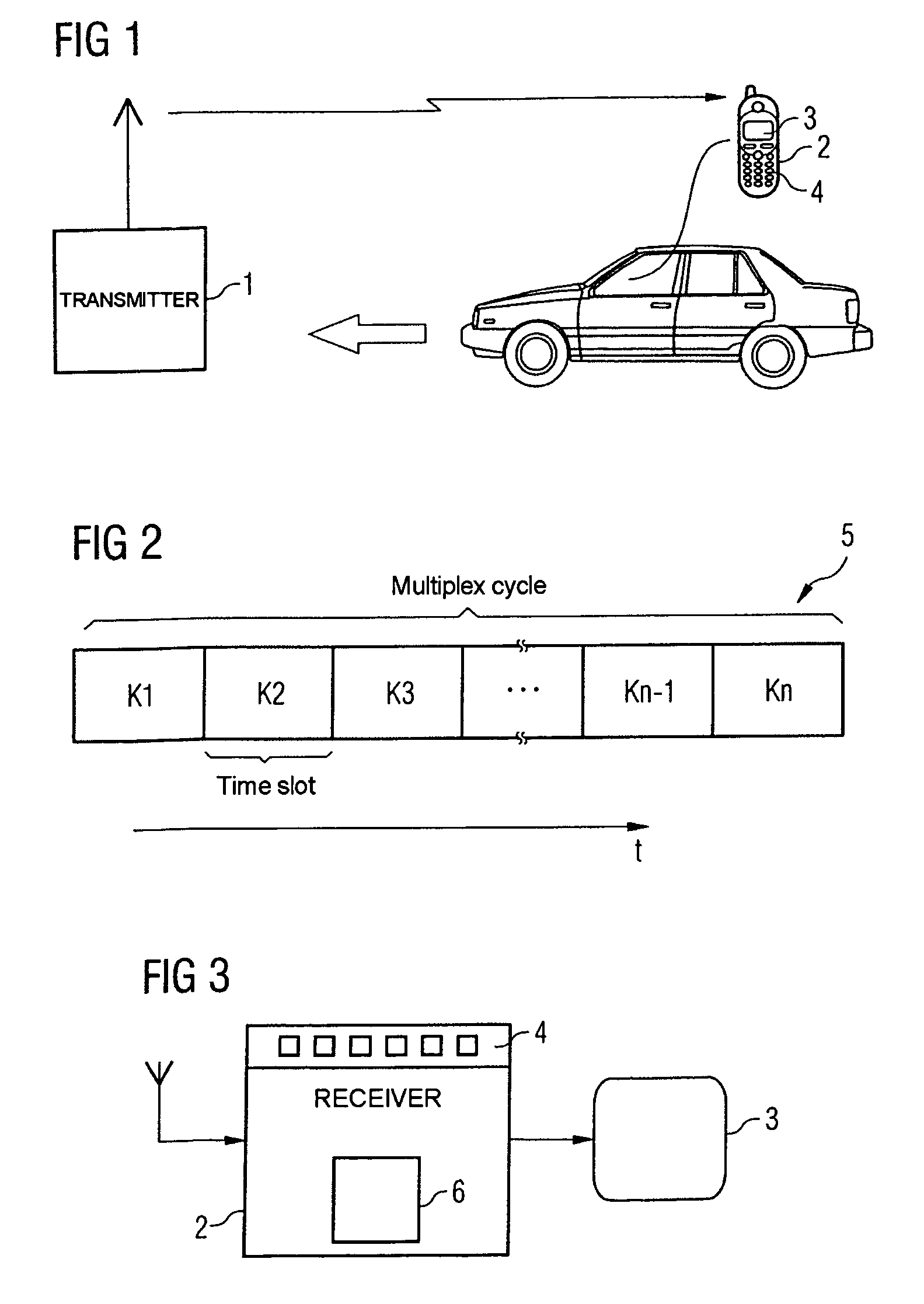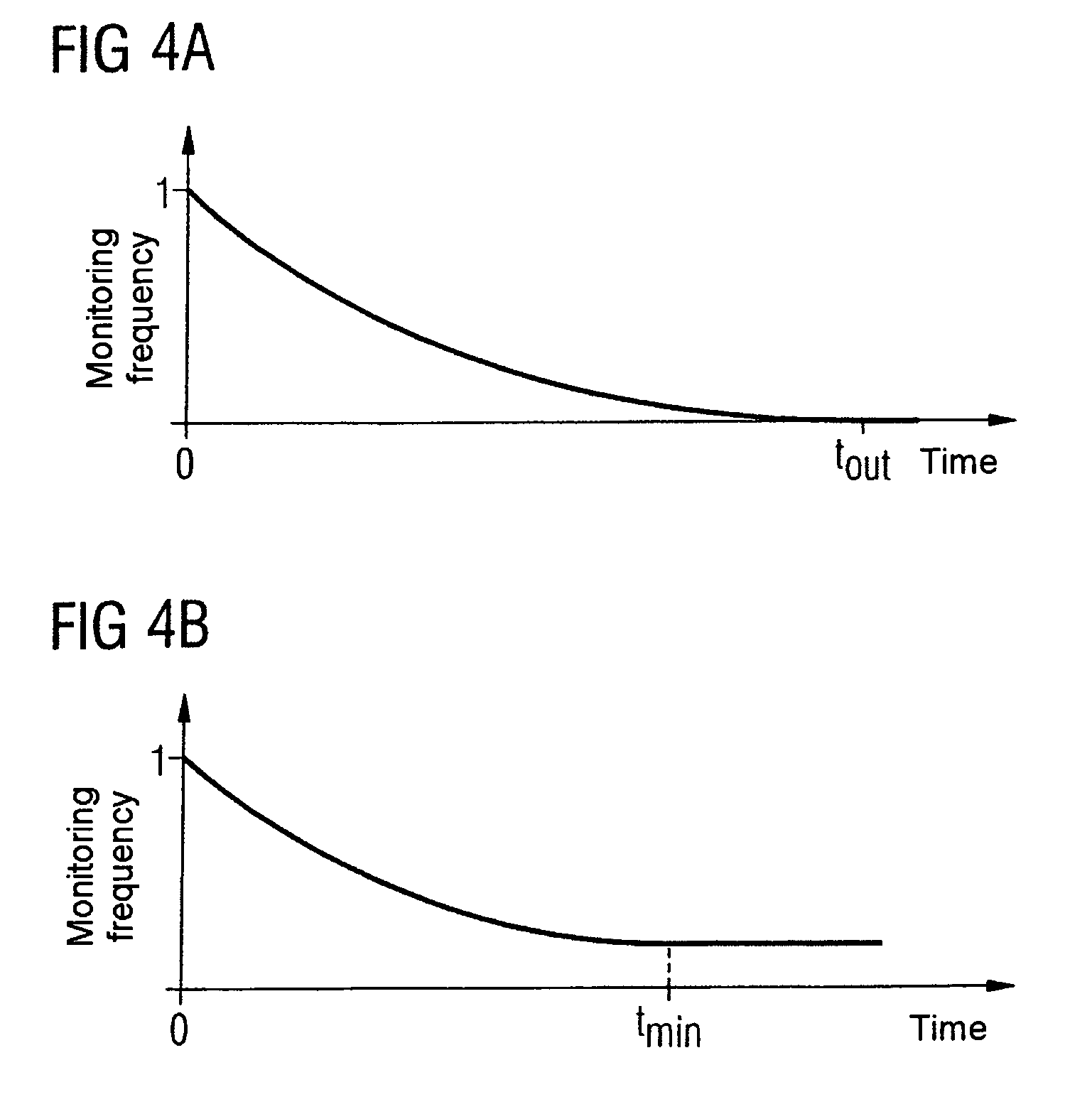Method for avoiding switch-over delays when changing channels in digital television transmission systems
a technology of digital television transmission system and delay, applied in the field of delay avoidance of switch-over delay, can solve the problems of considerable delay in changing channels, delay longer than 1 second already being found to be very disturbing, etc., and achieve the effect of avoiding delay or
- Summary
- Abstract
- Description
- Claims
- Application Information
AI Technical Summary
Benefits of technology
Problems solved by technology
Method used
Image
Examples
Embodiment Construction
[0025]FIG. 1 shows a situation such as typically occurs in digital television transmission. A stationary transmitter 1 transmits audio and video data in digital form to a mobile, moving terminal 2, e.g. a PDA (personal digital assistant) or a mobile telephone. The latter has a display or screen 3, by means of which the television picture can be represented. The program selection can be performed by means of a keypad 4. The mobile terminal 2 has its own power supply, typically in the form of chargeable accumulators.
[0026]The video and audio data are transmitted in accordance with a predetermined standard. The DVB-H (Digital Video Broadcasting-Handheld) Standard is considered in an exemplary manner below.
[0027]In the case of the DVB-H Standard, each individual television channel is coded at 384 kBit / s. A number of n channels (e.g. n=10) is combined to form a single data stream 5 by time division multiplexing, see FIG. 2. The data stream 5 thus has a data rate or bandwidth of n*384 kBi...
PUM
 Login to View More
Login to View More Abstract
Description
Claims
Application Information
 Login to View More
Login to View More - R&D
- Intellectual Property
- Life Sciences
- Materials
- Tech Scout
- Unparalleled Data Quality
- Higher Quality Content
- 60% Fewer Hallucinations
Browse by: Latest US Patents, China's latest patents, Technical Efficacy Thesaurus, Application Domain, Technology Topic, Popular Technical Reports.
© 2025 PatSnap. All rights reserved.Legal|Privacy policy|Modern Slavery Act Transparency Statement|Sitemap|About US| Contact US: help@patsnap.com



